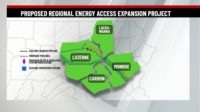In its remaining months, the Obama administration is accelerating one of its most ambitious efforts to narrow pay gaps by gender, race and ethnicity.
Set to take effect next year, a proposed rule from the U.S. Equal Employment Opportunity Commission would require all employers with 100 or more workers to submit pay data from W-2 forms along with their already mandated EEO-1 diversity reports. Observers say the reporting rule would vastly expand employer data-collection demands and allow EEOC and U.S. Labor Dept. to “target” firms for pay bias enforcement.
Under the proposal—for which comments now are being sought until April 1, with an extension of several months also possible—data would be collected and reported for set EEOC job categories in compensation ranges, called “pay bands,” during a midyear period.
Chair Jenny R. Yang called the new process “a significant step forward in addressing discriminatory pay practices,” which, the agency claims, employers could meet with “minimal” upgrades to existing employee management software.
Industry observers disagree. "I believe the EEOC is vastly underestimating the burden that would be placed on payroll departments with this change," says Danny W. Jarrett, managing principal of Albuquerque, N.M., law firm Jackson Lewis P.C.. He says the new data crunch “would be particularly burdensome in construction,” which has existing pay-reporting rules under federal, state and local prevailing-wage laws.
EEOC also has not addressed new risks to employee privacy and data confidentiality, he notes.
“This is one of the government’s first efforts to use big data,” adds Jodi Taylor, an Atlanta-based employment attorney with industry clients.
She says the data could prompt pay-gap probes by federal agencies and added plaintiff litigation. “It could fuel class-actions or allow plaintiffs to have their homework done for them,” Taylor says.
John C. Fox, president of Fox, Wang & Morgan P.C and a former Labor Dept. federal contractor compliance official, said in an employment law article that “If approved, it will be expensive to employers to defend what will be tens of thousands of innocent and benign ‘pay disparities’ the EEOC statistical formulas will identify.”
He said a recently completed Labor Dept. analysis of 26 million employee pay files in the last six years "has now revealed that occupation selection accounts for the pay gap, and not differential pay to similarly situated employees."






Post a comment to this article
Report Abusive Comment